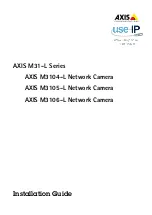
159
Step Command
Remarks
2.
Create a static CRLSP.
•
Configure the ingress node:
static-cr-lsp ingress
lsp-name
{
nexthop
next-hop-addr
|
outgoing-interface
interface-type
interface-number
}
out-label
out-label-value
[
bandwidth
[
ct0
|
ct1
|
ct2
|
ct3
]
bandwidth-value
]
•
Configure a transit node:
static-cr-lsp
transit
lsp-name
in-label
in-label-value
{
nexthop
next-hop-addr
|
outgoing-interface
interface-type interface-number
}
out-label
out-label-value
[
bandwidth
[
ct0
|
ct1
|
ct2
|
ct3
]
bandwidth-value
]
•
Configure the egress node:
static-cr-lsp egress
lsp-name
in-label
in-label-value
Use one command according
to the position of a device on
the network.
By default, no static CRLSP
exists.
Do not configure the next hop
address as a local public IP
address when configuring the
static CRLSP on the ingress
node or a transit node.
You do not need to execute the
static-cr-lsp egress
command on the egress node
if the outgoing label configured
on the penultimate hop of the
static CRLSP is 0 or 3.
Displaying static CRLSPs
Execute
display
commands in any view.
Task Command
Display static CRLSP information.
display mpls static-cr-lsp
[
lsp-name
lsp-name
] [
verbose
]
Static CRLSP configuration example
Network requirements
Router A, Router B, and Router C run IS-IS.
Establish an MPLS TE tunnel over a static CRLSP from Router A to Router C to transmit data
between the two IP networks. The required bandwidth for the tunnel is 2000 kbps.
The maximum bandwidth for MPLS TE traffic is 10000 kbps, and the maximum reservable
bandwidth is 5000 kbps.
Содержание HPE FlexNetwork MSR Router Series
Страница 10: ...viii Index 540 ...
















































